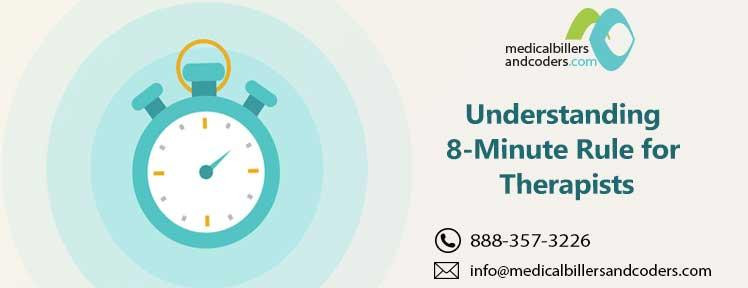Understanding 8-Minute Rule for Therapists

Introduction
The therapy 8-minute rule is a vital concept for therapists, specifically in the context of billing Medicare or Medicaid for their services. This rule allows therapists to calculate the appropriate number of billable units based on the duration of direct contact therapeutic services provided to a patient. Understanding the 8-minute rule is essential to avoid billing errors, delays in reimbursement, audits, and underbilling. In this article, we will delve into the intricacies of the therapy 8-minute rule, its application in therapy billing, and how to calculate billable units accurately.
What is the Therapy 8-Minute Rule?
The therapy 8-minute rule refers to the method used by therapists, including occupational therapists, physical therapists, and speech therapists, to determine the number of billable units for Medicare or Medicaid reimbursement. It applies to timed services where therapists provide one-on-one sessions with patients for at least eight minutes. Since treatments don’t always fit neatly into 15-minute increments, the therapy 8-minute rule helps determine the appropriate number of units to bill.
Understanding Billable Time and CPT Codes
To grasp the therapy 8-minute rule, it’s crucial to differentiate between service-based and time-based Current Procedural Terminology (CPT) codes. Service-based codes represent specific interventions or activities, while time-based codes correspond to the duration of therapy services provided. Both types of codes are used in therapy billing, and their accurate application is vital for proper reimbursement.
Calculating Billable Units
To calculate the number of billable units, you need to add up the total time for time-based services on a specific date of service and divide it by 15. The resulting value represents the number of billable units. The following table illustrates the unit calculation based on the total time:

Example Scenarios
To better understand the application of the therapy 8-minute rule, let’s consider a couple of examples:
Example 1: On a particular date of service, you provide 30 minutes of therapeutic exercise (EX), 15 minutes of manual therapy (MT), 8 minutes of ultrasound (US), and 15 minutes of electrical stimulation unattended (ESUN). By adding up the timed procedures, we get a total of 53 minutes, supporting 4 billing units. Additionally, the 15 minutes of ESUN qualify for one additional service-based billing unit, bringing the total units for that date of service to 5.
Example 2: During a session, you spend 10 minutes on ultrasound, 15 minutes on manual therapy, 8 minutes on therapeutic exercises, and 15 minutes on physical therapy evaluation. Adding up the timed procedures results in a total of 33 minutes, which corresponds to 2 billable units. Furthermore, the 15 minutes of physical therapy evaluation count as a separate service-based unit, bringing the total billable units to 3.
Handling Mixed Remainders
Mixed remainders occur when dividing the total timed minutes by 15 resulting in a remainder consisting of leftover minutes from multiple services or codes. If the sum of these remainders equals 8 minutes or more, an additional unit can be billed for the service with the greatest duration. For example, suppose the mixed remainders include 4 minutes of manual therapy, 2 minutes of ultrasound, and 2 minutes of therapeutic exercises. In that case, you can add them up to bill one extra unit of manual therapy. Read More: Understanding the 8-Minute Rule for Therapists




